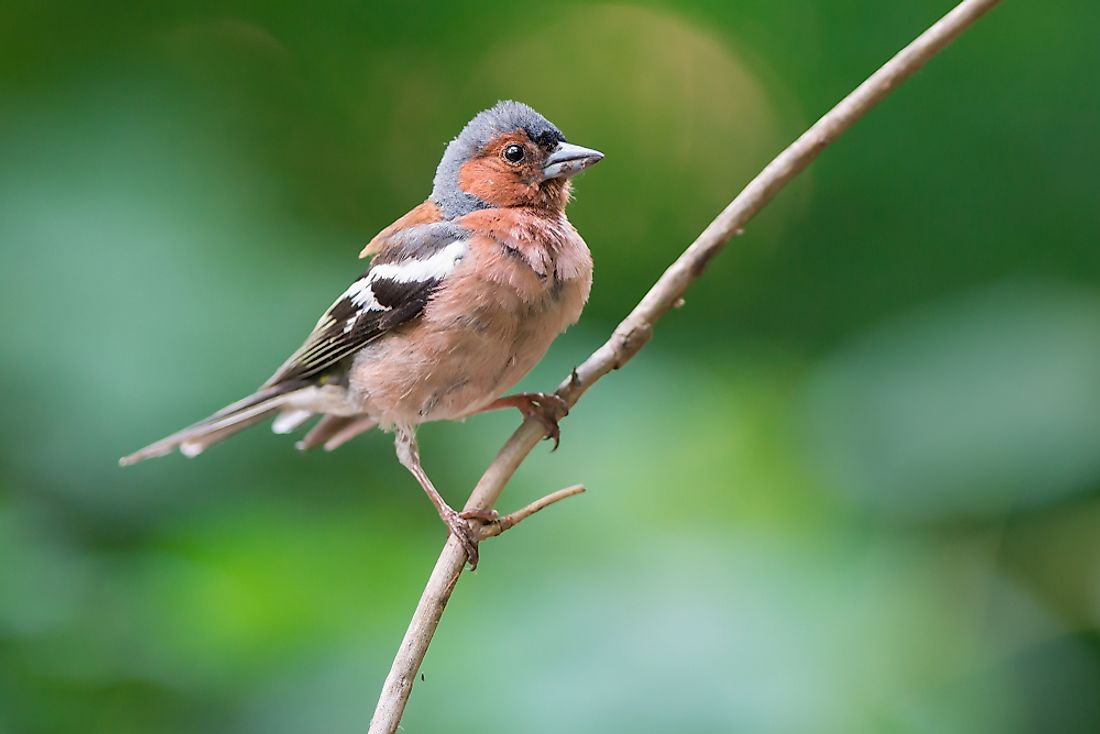What Are Passerine Birds?

Passerine refers to the birds that belong to the Passeriformes order, and they constitute more than half of the bird species in the world. The passerine birds are often known as the Perching birds and sometimes wrongfully known as the songbirds, although the songbirds belong to the Passerine order.
Passerine birds are often differentiated from other orders by their toe arrangement where three toes point forward while one toe points backward. Passerine birds have more than 110 families and about 6,409 known species. Passerines are remarkably more diverse terrestrial vertebrate and almost twice as a diverse as the largest order of the Mammalia, the Rodentia. Birds in this order include warblers, finches, and jays among others. The majority of passerines are omnivorous, and others like the shrikes are carnivores. The name Passerine is derived from the Latin word passer which refers to the house of a sparrow, and its scientific name is Passer domesticus.
Description
The majority of the passerines are typically small, while the largest and heaviest of the passerines are the common ravens and the thick-billed raven, both of which weigh more than 3.3 lbs and reach about 18 inches in length from head to tail. Other types such as the lyrebird and the birds of paradise have excessively long tail coverts and could be categorized as the longest overall. The smallest of the passerine birds are the short-tailed pygmy tyrant, which weigh about 0.15 oz and a length of 2.6 inches. Most of the Passerine fall within the range of 5 to 8 inches long and weigh between 0.5 to 1.0 ounces.
Types of Passerines
Typically the passerine order is sometimes divided into two or more broad subcategories which include Passeri (Oscines) and Tyranni (suboscines).
Passeri
Oscine or the songbird belongs to the passeri suborder, and there are about 4,000 species in the suborder. The oscines have a developed vocal organ, and they are capable of producing different sounds. This suborder has the most control over their syrinx muscles of all the avians, and they produce different vocalizations and a wide range of songs. They are commonly known as songbirds, and some of the songbirds include sparrows, jays, larks, blackbirds, lyrebirds, finches, warblers, cowbirds, starlings, and wrens among others.
Tyranni
There are about 1,000 species of birds in the suboscines suborder, and most of them are found in South America. The suborder has different anatomy of the syrinx muscle compared to the songbirds. Some of the birds in this suborder include woodcreepers, antbirds, and flycatchers
Acanthisitti
The Acanthisittidae refers to a small family of passerines endemic to New Zealand. There are about six or seven known species of the family and approximately 4 to 5 genera, and today only two species survive. Generally, they are known to form a distinct lineage of the passerines order, but experts differ on whether they belong to the oscines or the suboscines. More recent studies have indicated that they are a third and the oldest suborder. Currently, there are no close relatives, and they are often known as wrens, because of their similar behavior and appearance, although they are not related to the true wrens.
Characteristics
Passerines have a specialized foot for holding branches and have one toe pointing backward while three toes point forward. The toes have no webbing and the joint of the toe facing backward connect to the leg at the same level with the forward pointing toes. The arrangements of the toes in other orders of birds are different. Among the passerines the claws are sharp, and it is curved like those for the hunting birds such as eagles and falcons. The arrangements of the toes in the leg among the passerine birds have a special adaptation to perch. They have a tendon on the rear side of the leg connecting the muscle behind the tibiotarsus to the underside of the toe, which tightens and pulls automatically, whenever the leg bends and therefore making the foot to curl and become stiff whenever the birds perch on a branch. This characteristic allows the passerine to sleep while they are perching without falling. All passerines are terrestrial, and they are distributed in all continents except only in Antarctica.
Passerines as Pets
Passerines have been kept as cage birds for a very long time, and their origin is already lost in antiquity; however, it is known that by 5th century BC, several varieties of songbirds such as starlings, magpies, thrushes, and nightingales were kept by the Greeks. The Canaries were introduced to Europe in the 16th century from their native land in the Canary Islands and have since been bred into different varieties of domesticated birds. Other types of passerines that are kept as pets include starlings, estrildine finches, and cardueline. In the late 20th century more than 420,000 passerines were imported illegally into the US as caged birds, which exceed by far the number of parrots, the only other type of bird group kept as pets. Currently, several countries including the UK and the US prohibit the sale or capture of almost all the native songbirds.











